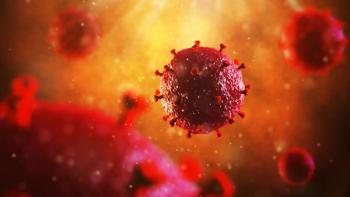
For Prion Diseases, It's Eat Now, Pay Later
LONDON - If the fates of former cannibals in New Guinea are an accurate indicator, British citizens may have a half-century to worry about whether they ate beef in the 1990s tainted with prion proteins that will lead one day to variant Creutzfeldt-Jakob disease.
LONDON, June 22 ? The incubation period for human prion diseases such as variant Creutzfeldt-Jakob (CJD) may be longer than 60 years, according to researchers who studied the closely related disease kuru in former cannibals in New Guinea.
The findings suggest that an epidemic of variant CJD could crop up decades from now, with the aging of people who in the 1990s consumed beef from cows infected with bovine spongiform encephalopathy (BSE), also known as mad-cow disease, wrote John Collinge, Ph.D., a professor of neurology at University College London, and colleagues in Australia and Papua New Guinea.
In fact, the incubation period for variant CJD could be even longer than that of kuru, the investigators wrote in the June 24 issue of The Lancet, because of a species-barrier effect that typically slows the rate of interspecies transmission.
Dietary exposure of the British population to BSE prions has been widespread, they wrote. The cattle epidemic is thought to have affected two million animals. Cattle BSE has also been reported in most European Union countries, Israel, Switzerland, Canada, the U.S, and Japan. So far, about 160 variant CJD patients have been identified in Britain, with cases also reported in France, Italy, Ireland, The Netherlands, Canada, Japan, and the U.S.
That number could skyrocket many years from now, they said, if the BSE/variant CJD pathologic prion protein form behaves similarly to the kuru prion protein. On the other hand, many potential vCJD patients may die of competing diseases over the intervening decades during the prion protein incubation.
"The eventual size of the vCJD epidemic remains uncertain," wrote The Lancet editors in an accompanying commentary.
"The number of infected individuals is still unknown," they added. "By investigating kuru, the only known example of a major human epidemic of a prion disease, we will begin to narrow our present uncertainties about vCJD. Any belief that vCJD incidence has peaked and that we are through the worst of this sinister disease must now be treated with extreme skepticism."
Dr. Collinge and colleagues studied people of the South Fore linguistic group from the eastern highlands of Papua New Guinea. Up until the middle of the 20th century, when the practice was stopped by Australian authorities who controlled the island, the South Fore typically ate the brains of relatives at funeral feasts as a sign of respect and mourning.
The people of the South Fore and those from other groups with whom they intermarried developed kuru, a progressive, invariably fatal encephalopathy with distinct clinical stages. The disease occurred primarily in women and children, because boys customarily did not take part in the rituals beyond the age of 8 years, the authors noted.
Kuru was eventually identified as a prion disease transmitted during the practice of "endocannibalism"--eating the members of one's own family, political, or cultural group.
For the current study, the investigators used kuru as a surrogate for variant CJD, looking at possible incubation periods, pathogenesis, and genetic susceptibility factors among people with kuru in Papua New Guinea.
They began with enhanced surveillance in 1996, scouring the region for all suspected cases of kuru. They took detailed histories of residence and of participation in mortuary feasts, and combined the information with data from serial neurologic exams whenever they were available.
They identified a total of 11 patients with kuru from 1996 to 2004, all of whom lived in the South Fore region. All of the patients had been born before the practice of funereal cannibalism was halted in the mid 1950s.
Although it's difficult to be certain that no additional instances of cannibalism occurred following the strictly enforced bans, the authors used a combination of experimental, epidemiological, and human behavioral evidence to arrive at the assumption that the practice had completely ceased by 1960.
"Therefore, we could define the minimum incubation period as the time between 1960 and the date of onset of kuru," they wrote. "For patients born in earlier decades, the actual incubation could be much longer; however, since the infecting event can never be known, all individuals alive during the period when consumption of dead relatives' bodies was universally practiced must be regarded as being at risk."
The patients, seven men and four women, were born between 1933 and 1949, and ranged from 46 to 62 years old at disease onset. Based on all of the available data, the investigators determined that the minimum estimated incubation periods ranged from 34 to 41 years.
In fact, the likely incubation periods in men, who only took part in funeral feasts when they were young children, may have ranged from 39 to 56 years, or perhaps even up to 63 years, the investigators wrote.
They also looked for evidence of a specific polymorphism, or variant, in the prion protein gene in humans that has been shown to be a major determinant of susceptibility to prion diseases. The polymorphism, which occurs at codon 129 of the gene PRNP, determines whether the amino acids methionine or valine are present at that location.
All cases of human vCJD have occurred in patients with the methionine-methionine genotype, which suggests that the methionine-valine and valine-valine genotypes are protective, researchers have found.
They found that eight of the 10 patients for whom genetic data were available were heterozygous for the polymorphism, a genotype associated with extended incubation periods and resistance to prion disease, the authors found.
"Incubation periods of infection with human prions can exceed 50 years," Dr. Collinge and colleagues concluded. "In human infection with BSE prions, species-barrier effects, which are characteristic of cross-species transmission, would be expected to further increase the mean and range of incubation periods, compared with recycling of prions within species. These data should inform attempts to model variant CJD epidemiology."
Newsletter
Enhance your clinical practice with the Patient Care newsletter, offering the latest evidence-based guidelines, diagnostic insights, and treatment strategies for primary care physicians.



























































































































































































































































































